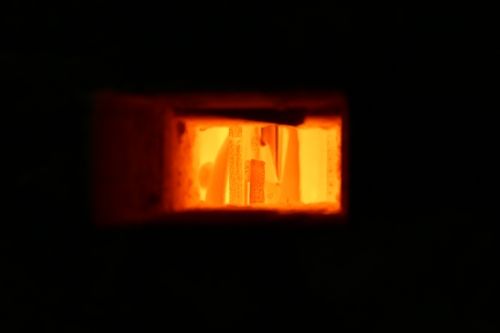Rules and regulations of sourcing wild raw materials
One can find clay and other raw materials in many places. If you dig a hole in your garden, you might find interesting clay. If you ask a farmer, surly, he will have areas in his fields with interesting ressources.
On this island, a lot of clay is revealed as beautiful coloured formations along the south west coast.In any case, it is important to state that on private property, the rules for collecting clay and rock are very simple: It is not allowed! – unless, one have a very clear agreement with the owner of the land.
We have attached a link below that tells you what you can and cannot do in public areas.One thing is always the same.
Treat nature with respect and always leave a place with as little trace behind as possible.
Hvad må jeg samle i naturen? (mst.dk)

Method
The project grew from pure love for the material and deep and sincere fascination for the place in which we live and work and which contains almost every raw material that one could dream of in a studio praxis.
Jesper knows the island history and geology very well. With his ability not to get too absorbed in the making and firing new combinations of raw materials, he spends a lot of time in Bornholm Island Museum archives, or studies old maps and photos from when the island was still mining clay and rock for the local ceramic industry.
This “never-ending making and firing process” in three very different ways of working, has turned out to be Iwami, Anne Mette and Ann-Charlottes method for understanding the source of raw materials.

The project grew from pure love for the material and deep and sincere fascination for the place in which we live and work and which contains almost every raw material that one could dream of in a studio praxis.
Jesper knows the island history and geology very well.
With his ability not to get too absorbed in the making and firing new combinations of raw materials, he spends a lot of time in Bornholm Island Museum archives, or studies old maps and photos from when the island was still mining clay and rock for the local ceramic industry.
This “never-ending making and firing process” in three very different ways of working, has turned out to be Iwami, Anne Mette and Ann-Charlottes method for understanding the source of raw materials
Smaller samples for clay, slip and glaze tests are collected at Risegård, with kind permission from the land owner.

Clay, rock and other materials are discovered studied and sometimes cleaned, crushed and sieved together.
The first tests are made together or individually for different purposes.
Individual pieces from a verity of clay blends based on the shared test results, are made in the three artists individual studios. (Iwami has his own studio in our workshop)
All the work is fired in either of the three kilns that suits the clay and glaze combinations.
Results are always shared and studied together.



In 2017 we built a clay kiln.
This had been a dream of mine for some time, having had a strong interest in Yakishime Pottery as well as being introduced to the Risegaard Red Clay formation previously. This clay seemed like the perfect low firing body in which we could make from. I approached the idea to Anne Mette, ‘to build the clay kiln here at Cassius Clay’. I was surprised at the instant response, Anne Mette seemed very keen with the idea, also sharing a love for Yakishime Pottery. There was nothing stopping us now!
Unfortunately, the weather wasn’t the best of conditions, heavy wind and rain. However, with our strong will and perseverance and the help of Jesper and his civil engineering brain, we managed to build the kiln with. Why did we build a clay kiln from such material and not use bricks? Due to my interest in traditional pottery and having only fired in brick kilns before. I hoped to dive back into my cultural heritage using materals at hand to discover techniques and reveal new results. This is helping me as a potter to understand this genre of pottery adding to my breadth of knowledge. A major factor in making it possible was down to the fact Anne Mette had collected a good amount of clay from the site of Hasle’s Tile Factory, also having pipes at hand in which made up the chimney and flues.
Spending our majority of time focusing on building the kiln, when it came to firing the kiln, with little time and experience the results were far from ideal.
The following year we were unable to fire the kiln focusing our attention on glaze, firing the Noborigama. So, it wasn’t until 2019 that we fired the kiln for a second time. This time with a record of our previous firing and having time to focus on both firing and aesthetic we were able to fire the kiln achieving certain desired results. Still learning and developing our knowledge, with time we hope to utilize this kiln adding to our work/process, also connecting us to the long tradition of Yakishime pottery.
Some of the work from the third firing is on display in our exhibitions.



A primer series of test runs, are studied and then used in each artists own ways and individual work, yet fired in the same kilns.
Results are again shared, studied and discussed in the group, recipes are shared and used in new individual series of work.
Sometimes with succes many times, we have cracked pots, slips or glazes that flake off or not a great match of firing temperatur with the Work fired.


